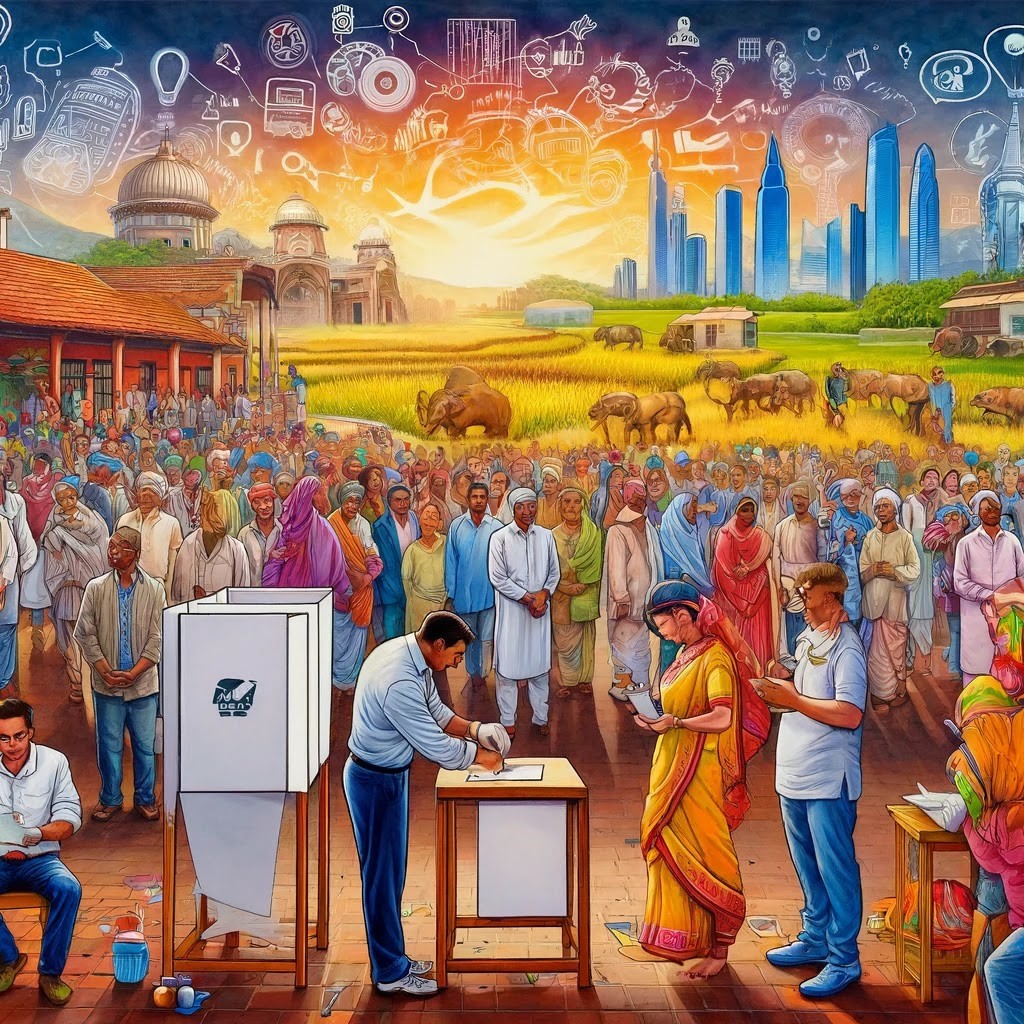Elections in India are a grand spectacle of democracy, characterized by vibrant campaigns, fervent public engagement, and, crucially, the influence of economic policies. The relationship between economic decisions made by ruling parties and their subsequent electoral outcomes is both complex and intriguing. As the 2024 India Poll is scheduled, we delve into how major economic policies have historically shaped the political landscape of India, influencing voter behavior and determining the fate of political parties.
The Interplay of Economics and Electoral Success
The Indian electorate is vast and diverse, yet there’s a common thread that often influences voter sentiment: the state of the economy. Economic policies impact everyday life and can make or break the electoral fortunes of political parties. These policies range from tax reforms and demonetization to agricultural subsidies and welfare schemes. Each of these has the potential to sway voters, particularly in a country where a significant portion of the population is directly affected by such decisions.
Major Economic Reforms and Their Electoral Repercussions
1. Liberalization in 1991
The economic liberalization of 1991, initiated by the then Finance Minister Dr. Manmohan Singh under the leadership of Prime Minister P.V. Narasimha Rao, serves as a landmark. The reforms, which included reducing import tariffs, opening up to foreign investment, and deregulating domestic markets, helped rescue India from a severe financial crisis. These changes spurred economic growth and helped the Indian National Congress (INC) stabilize its position in power during a tumultuous time. However, the benefits of these reforms were not immediately visible to the broader population, leading to mixed electoral outcomes in subsequent years.
2. National Rural Employment Guarantee Act (NREGA) 2005
Fast forward to 2005, the United Progressive Alliance (UPA) government introduced the NREGA, now known as Mahatma Gandhi National Rural Employment Guarantee Act (MGNREGA). This policy guarantees 100 days of wage employment per year to rural households. Its immediate impact on reducing rural poverty and providing employment was profound. In the 2009 general elections, the UPA’s return to power was partly attributed to the popularity of this scheme among rural voters.
3. Demonetization in 2016
In contrast, the Bharatiya Janata Party (BJP)-led government’s decision to demonetize the currency in circulation overnight in 2016 is another fascinating case study. The move was intended to curb black money, reduce corruption, and promote digital transactions. Despite the significant immediate economic slowdown and hardship for the masses, the BJP won several key state elections post-demonetization and returned to power in 2019. The decision was seen as a bold move by many, which solidified their electoral base, showcasing the complex dynamics between economic hardship and electoral success.
4. Economic Relief Measures During COVID-19
The outbreak of the COVID-19 pandemic brought unprecedented economic challenges. In response, the Indian government launched several economic relief measures, including direct cash transfers, food security initiatives for the poor, and credit guarantees for small businesses. These interventions were crucial in mitigating the economic impact on the most vulnerable sections of society. The government’s handling of the economic crisis during the pandemic was a key issue in the subsequent state elections. Regions that felt more supported by central policies tended to show greater support for the ruling party, indicating the direct impact of economic relief measures on voter sentiment.

Analytical Approaches to Understanding Economic Impact on Elections
To analyze the impact of these economic policies on electoral outcomes, political analysts often turn to data analytics and voter trend models. Voter behavior can be segmented by various demographic markers such as income levels, occupation, and regional affiliations, providing a nuanced understanding of how different groups respond to economic changes. For instance, while urban voters may respond more to policies impacting the service sector and digital economy, rural voters often react to changes in agricultural policy and employment schemes.
Case Studies and Historical Data
Several case studies highlight how immediate economic benefits or hardships influence elections. For instance, state elections often reflect more direct responses to economic policies than national elections, as state governments have a more direct impact on local economies. Analyzing voting patterns pre and post-implementation of significant economic reforms can provide insights into voter sentiment and priorities.
Future Trends and Predictions
As India continues to evolve economically, the interplay between economic policy and electoral success will also transform. The rise of data-driven campaigns and the increasing importance of economic literacy among voters, in 2024 India Poll Schedule, mean that parties need to carefully craft their economic policies. Election manifesto analysis of major parties India 2024 will likely see sophisticated uses of data analytics to not only frame economic policies but also to predict their impacts on electoral outcomes.
Conclusion
These recent examples further illustrate the critical role of economic policies in shaping electoral outcomes in India, now in India General Elections 2024. Each major economic decision not only reflects the government’s vision but also tests voter trust and acceptance. The interplay between economic initiatives and electoral success underscores the nuanced relationship between governance, economic management, and democratic accountability. The impact of economic policies on electoral outcomes in India highlights the intricate dance between governance, economics, and politics. As political parties navigate this complex landscape, the lessons learned from past economic decisions will undoubtedly shape future strategies. Understanding this dynamic is crucial for anyone interested in the intersections of economics and politics in one of the world’s most vibrant democracies.
A Note: Images in this Article are AI Generated


